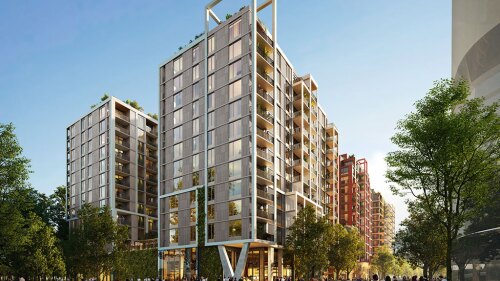This article is republished with permission from REITCafe.
Aging baby boomers and strong demand for inexpensive housing have helped boost the small manufactured housing real estate investment trust (REIT) sector. The sector’s market capitalization totals just $8 billion, but its total year-to-date return of 13.13 percent far exceeds the FTSE NAREIT All Equity REIT average of –1.07 percent.
Aging baby boomers are helping drive demand for manufactured housing in the retirement and vacation home markets. The housing market recovery has made it more feasible for snowbirds to sell existing homes and buy manufactured homes in retirement destinations. At the same time, rising rents and home prices are causing more people to consider manufactured housing rather than site-built housing. Because they are factory-built, manufactured homes are more affordable than single-family site-built houses or apartments. Illustrating the cost advantage, the U.S. Census Bureau reports an average sales price (net of land) of $64,000 in 2013. With an average size of 1,470 square feet (136 sq m), the cost per square foot was $43.54 ($469 per sq m). In contrast, site-built single-family homes had a 2013 average size of 2,662 square feet (247 sq m) and a cost of $93.70 per square foot ($1,008 per sq m).
| TREPP-i Survey Loan Spreads (50–59% LTV)* |
| This Week | Previous Week | Previous Month | End 2014 | End 2013 | |
| Industrial | 152 | 145 | 151 | 138.5 | 170 |
| Multifamily | 148 | 144 | 148 | 139.8 | 166.7 |
| Office | 160 | 154 | 155 | 148 | 175 |
| Retail | 153 | 148 | 152 | 139.8 | 175 |
| Average Spread | 153.25 | 147.75 | 151.5 | 141.5 | 171.7 |
| 10-year Treasury Yield** | 2.27 | 2.34 | 2.40 | 2.17 | 3.04 |
The market is supply-constrained and fragmented. It can be difficult to get land zoned for new communities both because of the public’s generally poor perception of manufactured housing and because such housing is treated as personal property rather than real property and as such generates less property tax revenue than traditional homes. Because of the difficulty of new development, REITs are expanding through acquisitions. Low interest rates and the availability of financing for REITs have provided the impetus for these transactions.
REITs generate income by leasing sites to tenants who own manufactured homes. The REITs own the underlying land, infrastructure, and common-area amenities. Because of the high cost to move manufactured homes, turnover is low, creating stability of income and occupancy for the REITs. As mentioned above, manufactured homes are treated as personal property, so buyers cannot use traditional mortgage financing. As a result, REITs also have established programs in which they acquire homes and then rent them to tenants. In addition, some REITs finance the sale of some rental homes to tenants.
The largest REIT in the sector, Equity LifeStyle Properties (ELS), announced second-quarter earnings this week that beat estimates. Its normalized funds from operations (FFO) gained 11 percent, or $0.07 per share, versus year-ago levels, and it lifted its full-year 2015 FFO guidance. Its stock price moved higher through much of the week.
Michigan-based Sun Communities (SUI), the second-largest REIT in the sector, will release earnings on July 30. The company completed its acquisition of the 59-community American Land Lease portfolio earlier this year, substantially increasing its presence in Florida.
UMH Properties (UMH) is the smallest manufactured housing REIT and the one facing the greatest challenges. Because it focuses on providing workforce housing near the Marcellus and Utica Shale regions in Pennsylvania, Ohio, West Virginia, and New York, investors are watching carefully for signs of softening as a result of lower oil prices and reduced oil and gas drilling activity. Nonetheless, UMH grew its number of manufactured-home sites by almost 5 percent between the first quarters of 2014 and 2015, and its stock price gained 5.9 percent year-to-date through July 23.
The lower cost of manufactured housing makes the sector attractive when home prices and/or interest rates rise. At the same time, high barriers to entry limit the potential for overbuilding. So far this year, it appears that investors believe that demographic trends and the prospect of higher interest rates favor the manufactured housing REIT sector.
* TREPP-i Survey Loan Spreads levels are based on a survey of balance sheet lenders. For more information, visit Trepp.com.
** - 10 yr. Treasury Yield as of 7/24/2015.




